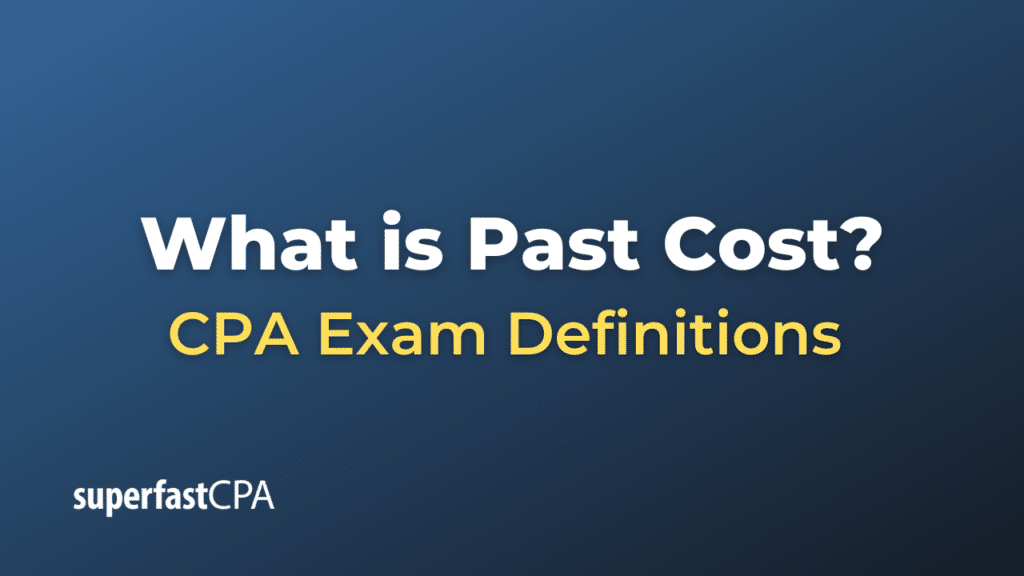Past Cost
“Past cost” refers to the historical cost or actual cost that a company has incurred for a specific item, asset, project, or any other business operation in the past. This can include costs such as the price paid to acquire an asset, the labor costs associated with a past project, or the costs of materials used in manufacturing a product.
Past costs are often used in financial reporting and in evaluating the performance of a company. However, it’s important to note that past costs are “sunk costs” – they’ve already been paid and cannot be recovered. Therefore, in most cases, they should not influence future business decisions. This is known as the “sunk cost fallacy”, where a business or individual allows the cost that has already been incurred (and cannot be recovered) to impact future decisions.
For example, a business might be tempted to continue a project because of the significant investment they’ve already made in it, even if the project is no longer expected to be profitable. Economically, it would be more rational to disregard the sunk cost and make decisions based on future cost and benefit prospects.
Accounting principles require that many types of assets, such as property, plant, and equipment, are initially recorded at their historical (or past) cost in the financial statements. However, depending on the accounting standards applied, these assets may be subsequently measured using different models (such as a cost model or revaluation model).
Example of Past Cost
Let’s consider an example involving a manufacturing company, XYZ Corp, that purchased a piece of machinery five years ago.
XYZ Corp bought a manufacturing machine for $100,000 five years ago. This is the past cost or historical cost of the machine. The $100,000 has already been spent and cannot be recovered, making it a sunk cost.
Now, let’s say that XYZ Corp is considering an upgrade to a new machine that is more efficient and can produce more units per hour. The new machine costs $150,000. Some executives might argue against the purchase because XYZ Corp has already spent $100,000 on the current machine.
However, when making this decision, XYZ Corp should consider the future benefits and costs. The past cost of $100,000 is a sunk cost. It’s money that has already been spent and it cannot be recovered, regardless of whether XYZ Corp buys the new machine or not. If the new machine can increase production and profits by more than its cost, it might be a worthwhile investment, regardless of what was spent on the old machine.
In the context of financial reporting, XYZ Corp would have recorded the initial purchase of the machine at its past cost of $100,000 (assuming that no other costs were involved in getting the machine ready for use). Over the years, XYZ Corp would have depreciated this machine, reducing both its carrying amount on the balance sheet and the company’s reported profits on the income statement.













